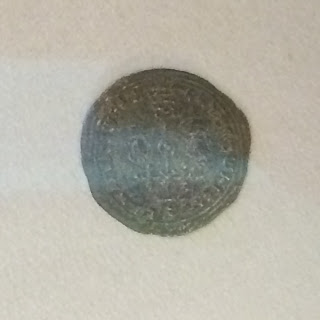 |
| Byzantine ivory art had almost always the same artistic theme. Pictures from significant religious events of christianity. |
 |
| Ivory was a precious material that was used by Byzantine artists up to the 7th century when the empire started to gradually decline. |
 |
| A triptych. A three part case like picture which closes and consists of three parts. |
Προσθήκη λεζάντας
 |
| Mother Mary crowns a Byzantine emperor |
 |
| The early Byzantine artwork shows that Eastern influences that would be obvious in Byzantine iconography were still nonexistent. |
 |
| Ivory artwork was also used for decoration of wealthy Byzantine houses |
 |
| Ivory sculpture that shows Jesus' life. |
 |
| Roman statues were more detailed and bigger than their greek counterparts. Roman investments on art and abundance of money were the key factors. |
 |
| Two peacocks drinking from a spring |
 |
| There were many warrior saints in Christendom and most of them were deeply revered. |
 |
| Early Byzantine sculpture was almost similar to Roman sculpture. |
 |
| A sculpture that shows an event at the Byzantine hippodrome |
 |
| A bust of a Byzantine emperor. |
 |
| Early Byzantine emperors were depicted in sculptures just like their older Roman emperors of the past. |
 |
| A sculpture that shows a scene of the apocalypse. |
 |
| A sculpture that shows the patriarch of the Medici family. The famous bankers of Medieval Florence. |
 |
| Byzantine currency showed mostly the emperor who was the head of the state most of the times with jesus christ on his side. |
 |
| Byzantine currency circulated all around the Mediterranean especially until the age of Emperor Justinian. |
 |
| Perseus. The last king of Macedon before the Roman conquest. |
 |
| Olympias, The mother of Alexander the Great |
 |
| Philip the father of Alexander the Great. |
 |
| Alexander the Great. |
 |
| Emperor Leo II |
 |
| Emperor Basiliscus |
 |
| Emperor Alexander of the Byzantine empire |
 |
| Emperor Constantine VII |
 |
| Emperor John Tzimiskes |
 |
| Emperor Constantine VIII |
 |
| Emperor Michael V (Kalaphates) |
 |
| Empress Theodora |
 |
| One of the most famous coins of ancient Greece. The Athenean drachma with the owl. Nowadays the Greek 1 euro coin shows the same owl. |





































































